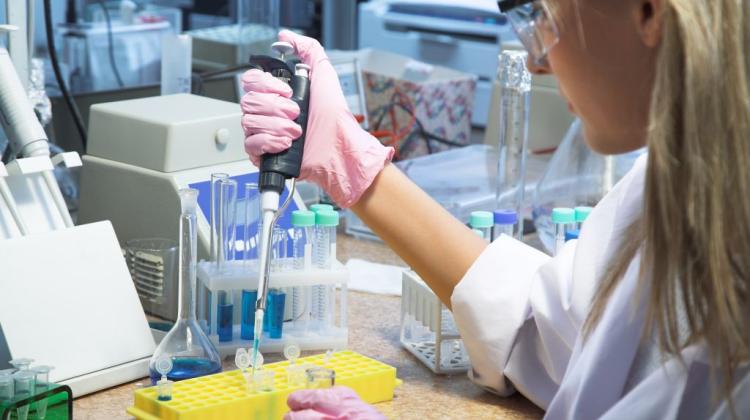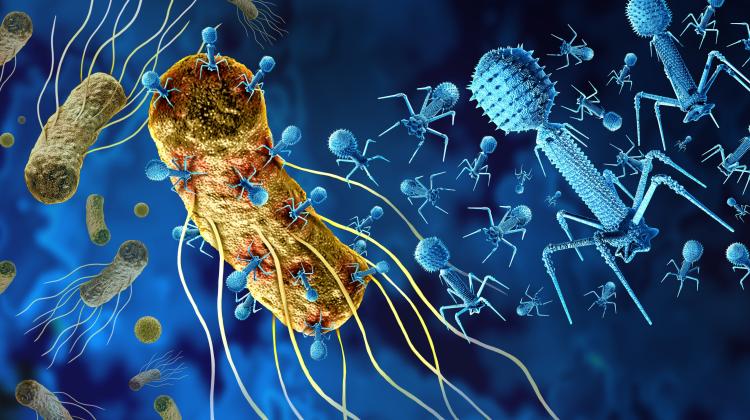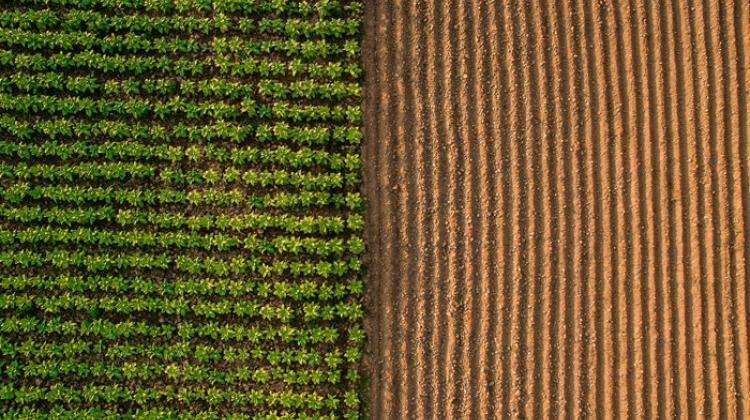We know how bacteria produce cellulose

Cellulose, present in wood and paper, is one of the most common polymers in nature. Scientists have succeeded in reproducing in vitro the method in which the bacteria produce cellulose. One of the study authors is young researcher from Poland.
The results were published in January in "Nature". One of the publication authors is Joanna Strumiłło, PhD student at the Faculty of Biology and Environmental Protection, University of Łódź. While on fellowship at the American University of Virginia she participated in the biochemical research on bacterial cellulose synthesis.
Cellulose is a natural polymer - polysaccharide composed of interconnected glucose particles. Joanna Strumiłło explained in an interview with PAP that cellulose is produced by vascular plants, algae, some bacteria, and even some animals such as tunicates. The compound is insoluble in water, relatively resistant to mechanical damage and durable.
Cellulose is present in timber and it is an important ingredient of paper. "It is an important substance for plant growth, it gives plants their rigidity and directs growth" - explained the biologist. Bacteria use cellulose mainly for protective purposes - they formed so-called biofilm, which protects them against external factors. Biofilms in bacterial infections may protect bacteria against antibiotics. According to Strumiłło, cellulose obtained from bacteria, while formed similarly to the plant cellulose, has different physico-chemical properties and it is less contaminated with other compounds. For these reasons it can be used, for example, for the manufacture of dressings.
In the study published in "Nature", researchers at the University of Virginia used X-ray crystallography to determine the structure of the complex of proteins necessary for the synthesis of bacterial cellulose in vitro and investigated the mechanisms of production and transport of the polymer through the inner membrane of the bacterial cell wall. According to Joanna Strumiłło, research on the synthesis of cellulose may be important in both medicine and industry.
The team from the American university confirmed earlier observations that the production of cellulose in vitro required a complex of two proteins occurring naturally in the inner membrane of bacteria. Researchers obtained the proteins in pure form and made these compounds produce cellulose in appropriate conditions outside bacterial cell. They were the first to achieve this.
Joanna Strumiłło explained that in the experiment proteins isolated from bacteria were placed in a test tube, providing specific conditions for the synthesis of cellulose, including activated glucose, metal ions necessary for the synthesis etc. As a result, white precipitate insoluble in water was secreted. Scientists confirmed it was cellulose.
Strumiłło Joanna said that difficult parts of the experiment included obtaining the expression of proteins which were functional, that would synthesize cellulose, and selecting the appropriate conditions for the purification and crystallization. Essential in the purification of proteins of this class is the selection of appropriate detergents, which mimic the natural environment of the cell membrane. Another problem was recreating the conditions in which the protein could properly perform their functions, and synthesize cellulose at the appropriate level.
PAP - Science and Scholarship in Poland, Ludwika Tomala
lt/ ula/
tr. RL
Przed dodaniem komentarza prosimy o zapoznanie z Regulaminem forum serwisu Nauka w Polsce.


















